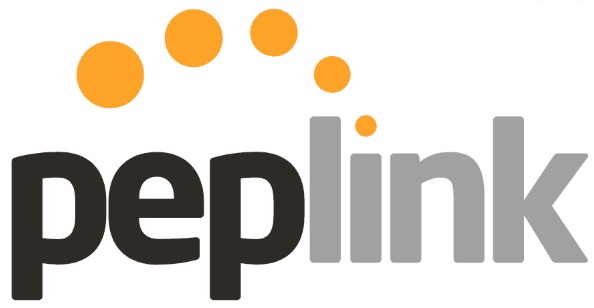Recently released Peplink beta firmware version 8.5.1b01, introduces a host of new features, improvements, and bug fixes. This release is designed for testing purposes and should not be deployed on production routers. It’s crucial to understand the potential risks associated with using beta firmware in a live environment. As such, this firmware is best suited for lab setups or controlled test environments.
Important Notes: Testing-Only Firmware
While beta releases offer exciting new functionalities, they come with inherent instability. Peplink’s 8.5.1b01 beta firmware is no exception, as it contains experimental features that may not be fully refined. Therefore, it’s essential to avoid installing this firmware on production routers that are critical to business operations. Using it outside of a controlled environment may lead to unexpected behaviors or downtime, which could disrupt network performance.
For those keen to participate in testing this firmware, please back up your current settings and configuration files. It’s also advisable to keep your device’s previous stable firmware on hand in case a rollback is necessary.
Overview of Supported Devices
Firmware 8.5.1b01 supports a wide range of Peplink devices, including but not limited to:
- Balance Series: Balance 20X, 30 LTE/Pro, 310X, 305, 380X, 710, 2500
- MAX Series: BR1 Mini, BR1 Pro 5G, BR2 Pro, HD2, HD4, MBX Mini
- UBR Series: UBR Plus
- SDX Series: SDX, SDX Pro
- PDX and EPX devices
Some older models, like the Balance 20 HW7-8 or MAX BR1 HW1-3, will not support future major firmware updates and will only receive 8.3.x maintenance releases.
New Features and Enhancements
Peplink Beta Firmware 8.5.1b01 beta firmware introduces several new features and enhancements, aimed at improving network management, performance, and connectivity options:
- Airplane Mode Automation: Added an option to set devices to airplane mode automatically when the cellular WAN is disabled.
- Improved VLAN Management: Users can now select a preferred VLAN as the source IP for Web Admin RADIUS/TACACS authentication.
- Enhanced SNMP Monitoring: SNMP now includes detailed PCI, channel, and channel width information for better monitoring.
- LAN IP Configuration for NAT Mapping: Additional IP addresses can now be configured on LAN/VLAN networks to enhance NAT mapping capabilities.
- HTTPS URLs for Dynamic DNS: This update adds support for HTTPS URLs in custom WAN Dynamic DNS settings, offering more secure connectivity options.
- Starlink Positioning Data: In cases where GPS data is unavailable, Peplink devices can now utilize Starlink positioning data to maintain accurate location tracking.
- Route-Based IPsec Enhancements: The Weighted Balance algorithm can now be applied to route-based IPsec tunnels, improving load distribution.
- Application Blocking Updates: The application blocking list has been updated to rename “Twitter” to “X” in the WebUI and InControl interface.
- Wi-Fi WAN Improvements: Wi-Fi WAN can now connect to Peplink Access Points even without active WAN connections, making it more flexible for users.
- SpeedFusion Test Expansion: SpeedFusion test duration has been extended to 3600 seconds, allowing for longer testing intervals.
Resolved Issues
This firmware addresses several bugs from previous versions, including:
- Fixed incorrect event log entries during cellular module firmware upgrades.
- Resolved issues related to eSIM activation failures across various models.
- Corrected issues with UDP relay for fragmented packets.
- Addressed misclassification of certain VPN traffic, now correctly identifying 3CX and WireGuard traffic.
- Improved log retention during WAN outages for better troubleshooting.
- Resolved issues where LAN ports on B One devices transmitted data despite being disabled.
These fixes enhance the overall reliability of Peplink’s routers when operating under beta conditions.
Known Issues
Despite the improvements, some known issues persist in this release:
- Setting SSID routing in SFC > Route by Wi-Fi SSID may be unavailable under non-default AP profiles.
- LAN clients may face difficulties obtaining IP addresses with multiple IP passthrough WANs.
- Blocking YouTube traffic may be ineffective if it uses the QUIC protocol.
- Docker containers cannot run on devices lacking an active DHCP server.
These issues may affect testing scenarios and should be considered before upgrading to the 8.5.1b01 beta firmware.
Conclusion
Peplink’s Beta Firmware 8.5.1b01 beta firmware brings numerous enhancements and fixes to the table, but users must proceed with caution. As with any beta release, this firmware is intended strictly for testing and should not be deployed on mission-critical networks. By testing in a controlled environment, users can explore new features and provide feedback to Peplink, contributing to future firmware improvements.
Download the complete Peplink Beta Firmware 8.5.1b1 release notes.
For more information on this release, visit Peplink’s Open Beta Program. If you encounter issues, you can report them through Peplink’s support ticket system.

